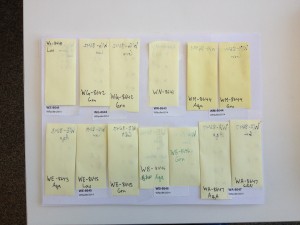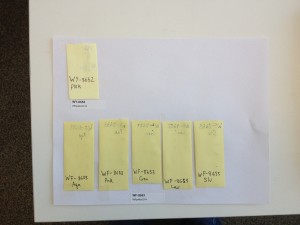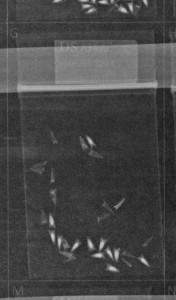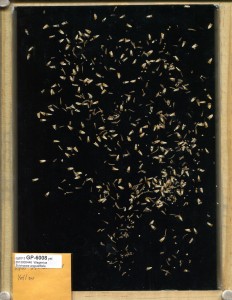|
|
We are excited to introduce members of Team Echinacea 2015. Each member has a page of introduction. Read about their backgrounds and interests:
Yay summer!
Here is a link to Alison Bewley’s presentation at MEEC. Alison & others represented Team Echinacea well at the meeting and learned a lot.
Title: Special Delivery!: Quantifying the Distance
that Solitary Bee Genera Move Pollen in a
Fragmented Prairie Plant Population
ABewley_MEECpresentation2015.pdf
The 2015 Midwest Ecology and Evolution Conference was March 28 & 29 at Indiana University in Bloomington.
Here is a link to Allie Dunn’s poster presentation at MEEC. Allie & others represented Team Echinacea well at the meeting and learned a lot.
Title: Can you extract DNA from a single pollen grain?: A methodology useful for plant conservation research.
ADunn_MEECposter2015.pdf

Team Echinacea made a great showing at MEEC — The 2015 Midwest Ecology and Evolution Conference. Members of the team gave great presentations and learned a lot from the other presenters. When Stuart gets back from vacation he will post Allie’s poster, Josie’s poster, and Alison’s presentation.
 Team Echinacea at MEEC 2015:
Alli Grecco, Jocelyn York, Jennifer Ison, Allie Dunn, Alison Bewley
We are in the process of reviewing many excellent applications for research internships. Thanks to references who sent in letters of recommendation! Thanks to all applicants–we will contact you soon.
Meanwhile, Jared has returned for a field trip to California, Stuart finished grading final papers, we are preparing for the SER meeting, and our citizen scientists continue clean heads, count achenes, and take random samples for x-raying. Yay team!
Photos of the sheets of sticky notes containing achenes (Echinacea fruits) that Will dissected at the U of Minnesota and that Jared will x-ray at the Chicago Botanic Garden this afternoon.
Will used freeze-dried pollen to pollinate the flowers that produced these fruits. During the summer styles of those flowers shriveled shortly after Will deposited pollen, providing evidence that the pollen was still alive. More backstory.
Do these these achenes contain embryos? We’ll find out this afternoon.
Live Science in real time!



We are starting to review applications for summer research internships for undergraduates (REU). Get your application in! We’ll accept applications until positions are filled.
Apply!
https://echinaceaproject.org/summer-reu-internship-2015-ech/
In our lab we use UTHSCSA ImageTool to count thousands and thousands of achenes (fruits) every year on thousands of images. It has a straightforward interface and easily does exactly what we want: click cursor on an achene, a dot appears on the achene and the counter increments by one, click cursor on next achene, a new dot appears, counter increments, repeat until all achenes are tagged, then read the counter. Voila!
We are now going to classify achenes in x-ray images as full, partially full, or empty. We need software with the capability to tag three colors and make three separate counts per image. However, we don’t need software that is complicated, and can do everything. We want software that can do this one thing efficiently.
ImageJ will work, but it is clunky, taking many steps to set up the counting on each image. Can anyone recommend software suitable for our needs?
I found a few software packages to investigate, listed below, but would appreciate any advice or leads on other software.
http://fiji.sc/Welcome
http://marvinproject.sourceforge.net/en/index.html
http://itk.org/
http://imglib2.net/
http://imagej.net/ImageJ2
http://www.jmicrovision.com/
http://loci.wisc.edu/software/imagej
http://meesoft.logicnet.dk/Analyzer/
http://icy.bioimageanalysis.org/
Click to enlarge the below images.
 X-ray image of Echinacea achenes
We count 12 full, 18 empty, and zero partially filled fruits (achenes).
 Image of all achenes from Echinacea head GP-6008
How many achenes do you count?
Dwight and Stuart broadcast native prairie seed in experimental plots p1 & p8 on Friday. At 34 °F (1°C) it was the warmest day in a month. It was also very windy –great for spreading seed! We broadcast Bouteloua curtipedula, Schizachyrium scoparium, Galium boreale, and Phlox pilosa directly on the snow. There wasn’t much snow and it was melting. We broadcast Lathyrus venosus in p1. We stored about half of each species, except L. venosus, in the Hjelm house to broadcast in the spring. (Hedging our bets.)
Davis Blasini was awarded the best undergraduate student poster in 2014 by the Ecology Section of the Botanical Society of America: “Introduction of Echinacea pallida in the Prairies of Western Minnesota and its Possible Effects on Native Echinacea angustifolia” Co-author: Stuart Wagenius.
Congratulations, Davis!
|
|







